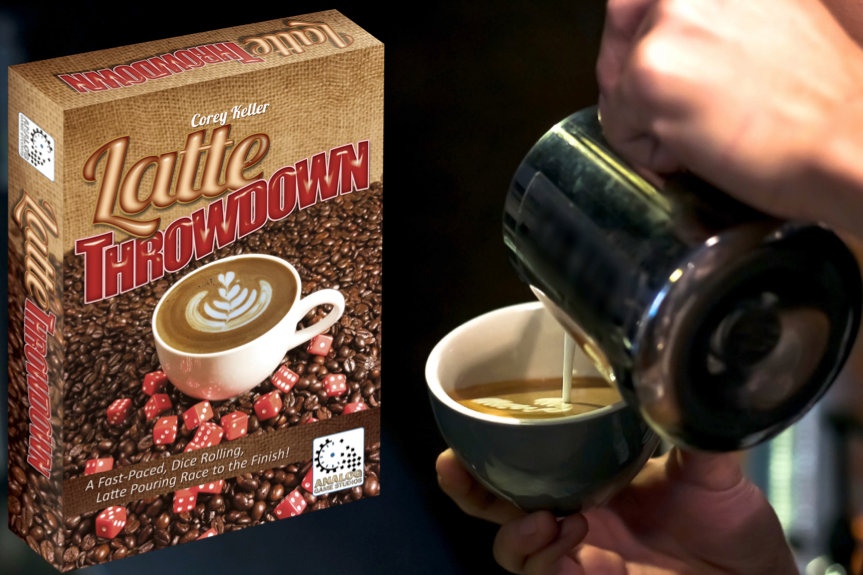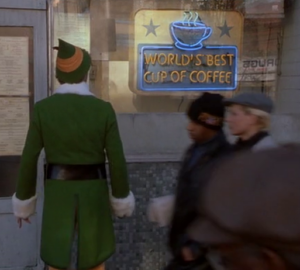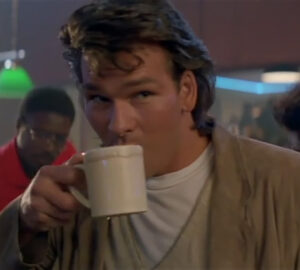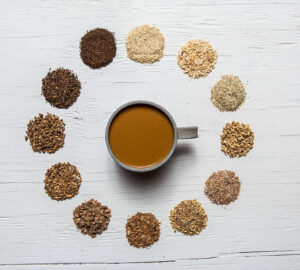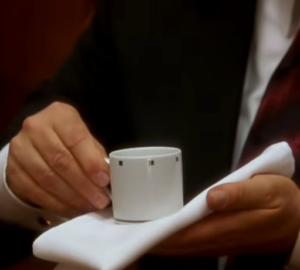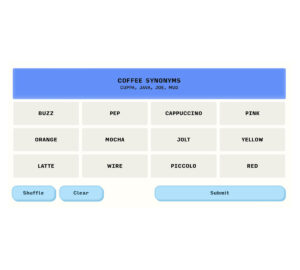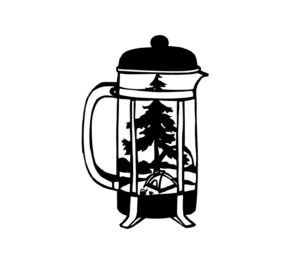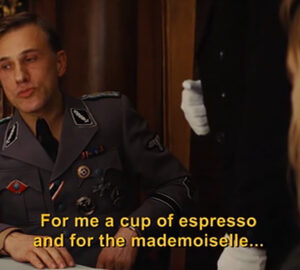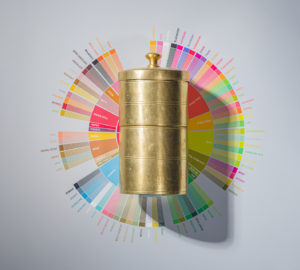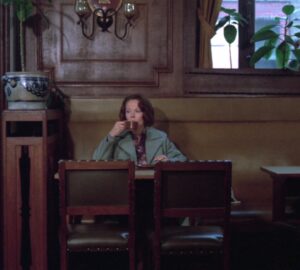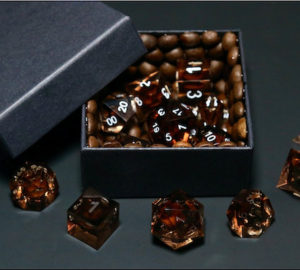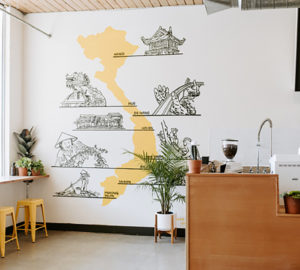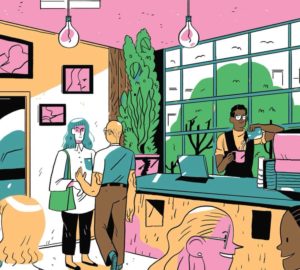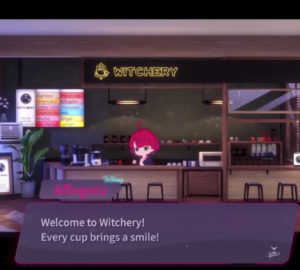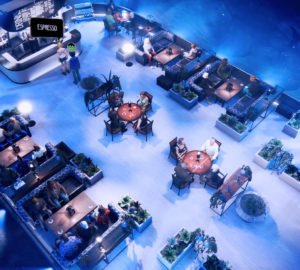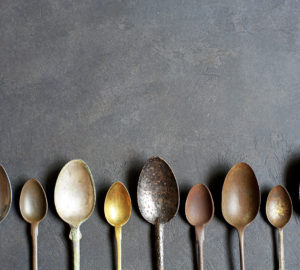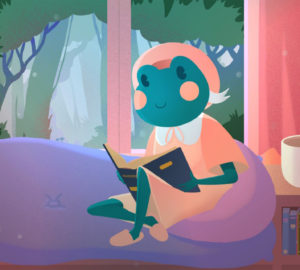Few things in public life enjoy coffee’s level of consensus.
In the United States alone, 66% of people are coffee drinkers—an astonishing figure. This means there’s a high chance that whatever your hobby or passion might be, it’s possible to find enthusiastic intersection with the drink. Board games are no exception.
I love a good game night. I’ve hosted some of my own, including an at SCA Expo. As someone who can’t drink alcohol, it’s a nice solution and alternative to bars. It takes my favorite parts of a bar—conversation, camaraderie, and connection—while removing the rowdiness of a crowd.
Dr. Greg Loring-Albright is an Assistant Professor of Interactive Media at Harrisburg University. He’s a game designer, former coffee professional of seven years, and my first Expo game night co-host. For Dr. Loring-Albright, the appeal of board games is similar to his interest in coffee. “[They] sit at this cool intersection of mathematics and quantitative systems, as well as a qualitative, sort of touchy-feely, vibe-based experience,” he tells me. In addition to his dissertation on analog games and players’ interaction with game media, he also co-designed the upcoming 3rd edition release of Bloc by Bloc: Uprising.
For this piece, we will not be going into the contentious debate of “what is a board game.” The loose usage here is analog, tabletop gaming, not a video game or PC game. It can be deck building or involve role-playing but at its core, it’s one where you play on a surface. Many of us anchor board games to childhood favorites like Monopoly or Life but there is far more to the world than what multinational conglomerate Hasbro produces.
Themed games
According to the forum Board Game Geek, there are 54 games and expansions listed associated with coffee. They cover every part of the coffee supply chain and span all the board game types.
Seize the Bean is a new board game that is meant to reflect the real-world experience of operating a cafe in Berlin. To construct its play, co-designer Dylan Howard Cromwell’s used his expat experience of living in Berlin, customer observations, and lengthy discussions with cafe owners. The game has an enormous selection of components, 600 people cards (about one-third are based on real people), 230 customers divided into 23 groups, and multiple neighborhoods. The replay factor is high, considering that each neighborhood has its own combination of customer groups and you never use all the groups in one play.
The seed of Seize the Bean was planted when he was working for a startup and frequenting a local cafe. Through his many visits, he observed how “they run their business, the decor they had, how they show so much attitude of their own personalities, their own lives, and how that brought them some clientele that matched them.” Plus, the customers that didn’t match them and what it must be like to deal with that dichotomy on a daily basis.
He credits the popularity of the game to its relatability. Coffee is a drink that is in many peoples’ daily lives and is easier for people to relate to than say, laying tracks for trains (no offense to trains, they’re great). “Coffee becomes the archway to get into games,” says Cromwell. “Seize the Bean is about people and it’s a business simulation. So coffee is just kind of the aroma to get you in the door.” He laughs. “So to speak.”
Some of the realistic parts of gameplay include how limited your resources are when you begin and the strategical thought that is needed for each action. “People get in and they’re like, why do I have so few baristas? Where do I get more baristas?” Cromwell tells me. He continues: “You know, you’re founding a cafe. You only have you and your significant other. You’ve got to make the most out of your actions. You better be stressed from the first action you take, like make it or break it kind of scenario.” Personally, I think this would be rather too realistic if you’re a cafe owner, much like how those who have worked in kitchens don’t enjoy playing Overcooked! (a video game where things go wrong in the kitchen).
Corey Keller’s game, Latte Throwdown, is also based on real-life interactions. Accurately depicting a latte art throwdown was important to Keller and all the pours found in the game are ones that have been used in competitions. “The big thing when pouring latte art is control,” says Keller. “Controlling your nerves, controlling the flow of milk from your pitcher etc… I wanted the game to feel like that.” With rolls of the dice, you try to be the barista who finishes a pour first. Another touch of reality is including cards that are helpful (“Steady hands”) or hurtful (“Steamer Malfunction”).
In another part of his life, Keller is the owner of Da Vinci’s Coffee and Gelateria and has competed in throwdowns himself. He reflects on how working in coffee helped in his passion for designing board games: “Coffee is this science that is so broad and exciting and full of intricate details that you really have to pay attention to it. A well-designed board game is the same way. There are layers of detail that you don’t see right away until you start exploring and experimenting. That causes you to always look for the details in what you do, whether it’s preparing a new single-origin coffee for a customer, or picking your next move in a high strategy two-hour game of Dead of Winter.”
Keller is not the only person I interviewed who currently has a foot in both worlds. Many Worlds Tavern is an online board-game-oriented roaster operated by Chris Porto and Andrew Loreman, both of whom are also part of Boomtown, a roastery and cafe in Houston. “We didn’t know exactly how much specialty coffee interests overlapped with nerdy board game interests,” says Loreman. “So we wanted to make it as approachable as possible.” It turns out that there is a significant overlap and “nerds like to be nerds about everything they discover.”
With game-inspired names like “Homely House” and “Great Old One,” Many Worlds contributes $1 of every bag purchase to gaming-based nonprofits. It was a decision that was built in from the beginning to demonstrate their intention of being part of the gaming community. Porto says, “If we are going to support the community or be part of this community, one big thing we were worried about is being a gimmick or kind of pander into this community to cash in on their passion.”
Gaming cafes
If you’re in a hobby for long enough, you eventually find “your people.” For board games, this means that some cafes and bars are designed explicitly for gaming: long tables, a wide selection of games in the library, snacks, and drinks to keep you playing into the night.
Brian Lew and Benson Chiu founded The Game Parlour, San Francisco’s first board game cafe. As a native of the city, Lew tells me how growing up, there wasn’t much for people to do at night aside from bars and boba places. He remembered enjoying game nights at friends’ houses and wanted to create a central space for game lovers to gather.
With the assistance of a Kickstarter campaign that helped with marketing and introducing new cafe features, The Game Parlour opened its doors in 2018. Its coffee menu features local roaster Ritual Coffee and the food menu is entirely gluten-free. “It wasn’t too hard to go gluten-free and it turned out to be really a good thing for us,” says Lew. And it’s “helpful for a lot of people out there who have celiac or gluten sensitivity.” Plus, fun names like “Battleship” (“black sesame waffle + strawberries, condensed milk, whipped cream”) and “Fury of Dracula” (“lychee jelly, strawberry purée, sparkling water”) make it all the more interesting to order.
Over in Omaha, Nebraska, nonprofit Spielbound and its sibling Spielbound Board Game Cafe were the first of their kind as a nonprofit based around board games. “I wanted a place for the community—for people of all backgrounds and interests and whatever your day job might be—and just leave it behind and come together over games,” says co-founder Dr. Kaleb Michaud. A cafe was a “natural fit” for this.
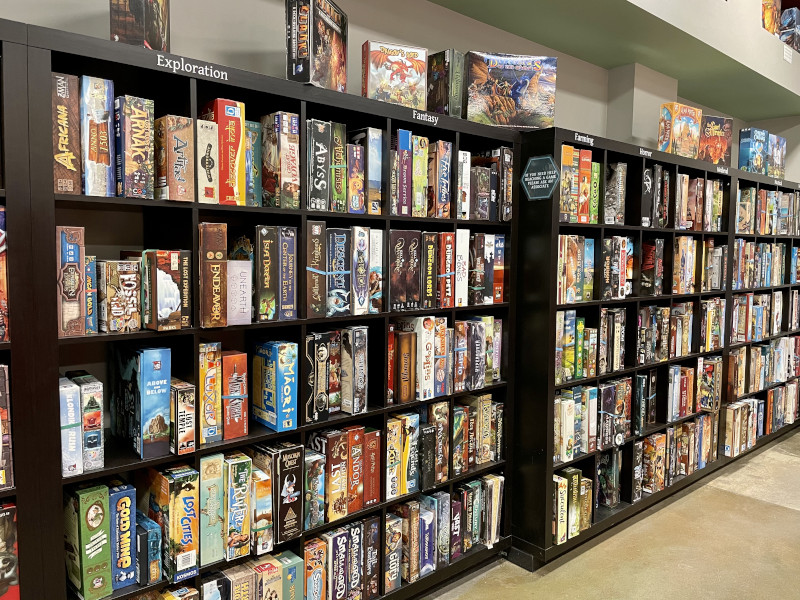
With over 3,000 games, Spielbound boasts the largest playable library in North America. The cafe also serves up locally roasted coffee, tea, soda, food, beer, wine, and cocktails. One of Michaud’s favorites is the Dice Delight, where customers roll a pair of dice: the six-sided dice denotes the type of drink and the 10-sided dice is the flavor. From there, the barista makes the drink, eliminating the decision paralysis that customers often face when presented with a large menu.
Michaud’s day job as a professor of rheumatology and public health researcher at the University of Nebraska Medical Center helped formulate the nonprofit’s mission. He discovered research that showed playing board games “once a week was associated more than anything else with preventing dementia or Alzheimer’s.” Explaining further, he says, “The theory is that it’s a combination of the cognitive cognition required to play combined with being in person and socializing.” The Stay Sharp initiative was born from this: committee members visit retirement communities and develop accessible adaptations for existing games.
Timea Farkas, a PhD researcher at The EPSRC Centre for Doctoral Training in Intelligent Games and Game Intelligence (IGGI) and a former coffee professional, agrees with Michaud on the importance of community. She believes the appeal of both industries rests in the “strong element of collecting things” and its community aspect. It’s “something to do with friends, chat about, geek out about.” Her current research has two parts: “board game player experience research” and “exploring the design space of board games with a technology component.”
The impact and appeal of gaming
Games do more than facilitate play and entertainment. Long-time coffee professional Nathanael May says playing board games helped with his management style. He explains how he likes games where randomness is followed by decision-making, “I would rather draw a card or roll a die, and then make a decision based on that result.” Otherwise, he feels like his decision-making has been undercut. When managing and interacting with people, he says, “I’m not giving them a job and then hopefully having it randomly come out the right way.” In addition, realizing that he prefers having fun over winning changed how he presents coffee to people. He values their enjoyment over what he thinks is the best, saying, “If it means that everyone at the table is going to enjoy the coffee, I choose the coffee that everyone will enjoy rather than the one that makes me look the smartest.”
Board games also have the unique ability to help players learn complex ideas. At the University of Michigan, researchers developed “Azteca Chess,” a game that demonstrates the intertwined influence of nine insects on smallholder coffee farms in Chiapas, Mexico. According to the researchers, “The quizzes revealed a statistically significant ‘gaming effect,’ showing that farmers who played the game were better able to recall the species interactions than farmers who attended lectures but did not play the game.”
On the surface, board games are a fun way to pass time. But like coffee, there’s far more to the culture. They provide a sense of place, community, and a myriad of benefits, even leading some coffee professionals to the world of academia. Now, excuse me as I’m off to buy some games.
Jenn Chen (@thejennchen) is an Editor At Large at Sprudge Media Network. Read more Jenn Chen on Sprudge.











